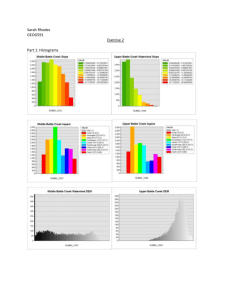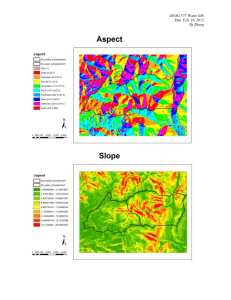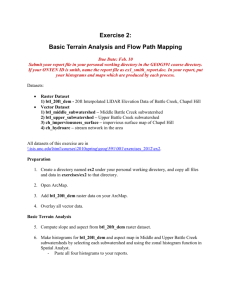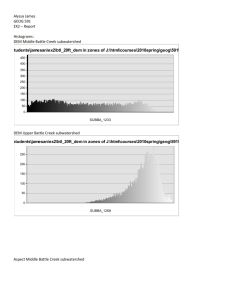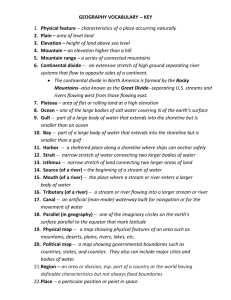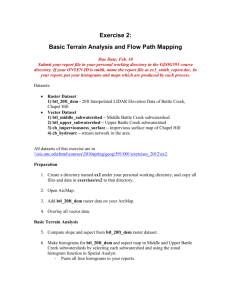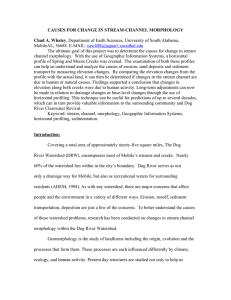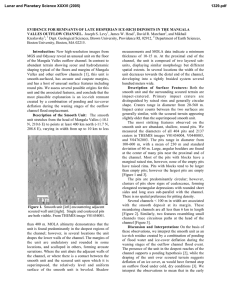Sarah Giles Geog 591 Exercise 2 In both of the subwatersheds, the
advertisement
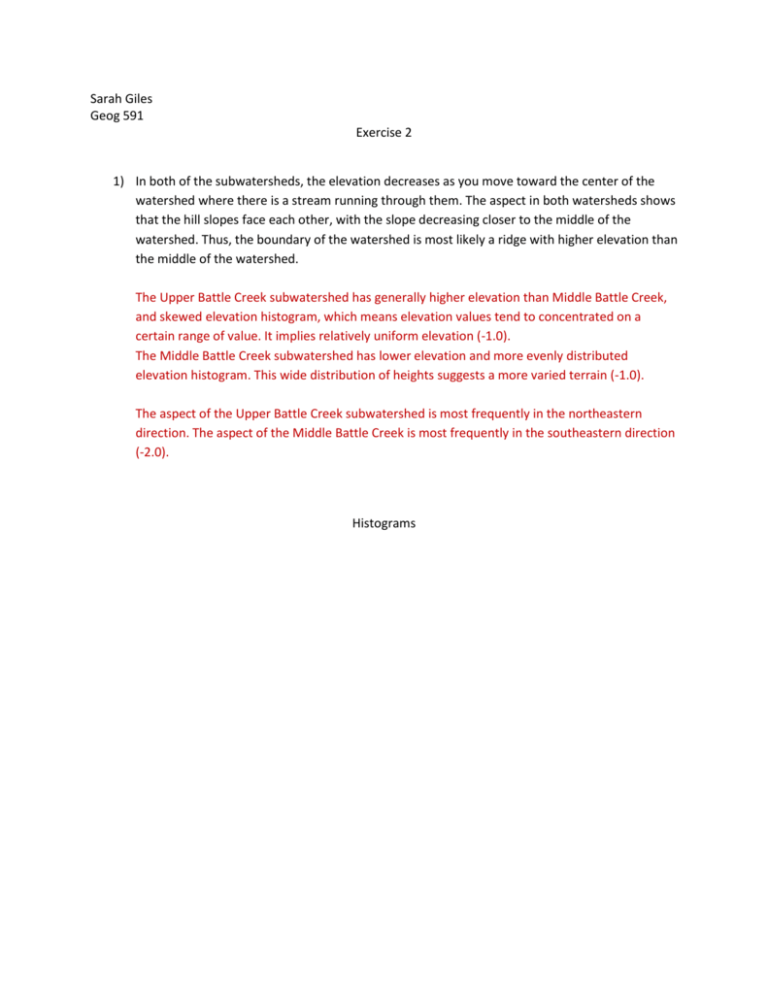
Sarah Giles Geog 591 Exercise 2 1) In both of the subwatersheds, the elevation decreases as you move toward the center of the watershed where there is a stream running through them. The aspect in both watersheds shows that the hill slopes face each other, with the slope decreasing closer to the middle of the watershed. Thus, the boundary of the watershed is most likely a ridge with higher elevation than the middle of the watershed. The Upper Battle Creek subwatershed has generally higher elevation than Middle Battle Creek, and skewed elevation histogram, which means elevation values tend to concentrated on a certain range of value. It implies relatively uniform elevation (-1.0). The Middle Battle Creek subwatershed has lower elevation and more evenly distributed elevation histogram. This wide distribution of heights suggests a more varied terrain (-1.0). The aspect of the Upper Battle Creek subwatershed is most frequently in the northeastern direction. The aspect of the Middle Battle Creek is most frequently in the southeastern direction (-2.0). Histograms 2) The major difference between the original and filled DEM is that the original just shows flow directions that would not necessarily cause water to accumulate in depressions, while the filled layer shows depressions along roads and infrastructure that have flow directions that would cause water to accumulate in these pits. No connectivity or organized for a stream network map of the original DEM (-2.0). The flow direction is very similar for the original and filled DEM, except where pits exist. 3) Depression cells are located near infrastructure adjacent to major roads and intersections as well as along a main stream that appears to be Battle Creek. Filling these pits affects the flow paths of these areas by redirecting water away from the locations of these pits and into the directions in which water actually flows (towards streams in the down slope direction). This is because these are artificial pits, and structures such as culverts actually allow water to flow in directions not indicated by these pits. Thus, filling these pits allows one to see where water actually flows, regardless of the location of artificial pits on the map. Location of Pits 4) 5) 87,480 x 400 = 34,992,000 sq ft, or 325.086 hectares 1 square foot = 0.000009290304 hectare For stream_500, 601 *400 * 0.000009290304 hectare = 2.233 hectares. For stream_1000, 1346 *400 * 0.000009290304 hectare = 5.002 hectares. (-4.0) Please use your onyen (scrgiles?) for naming your report. (15/25)
